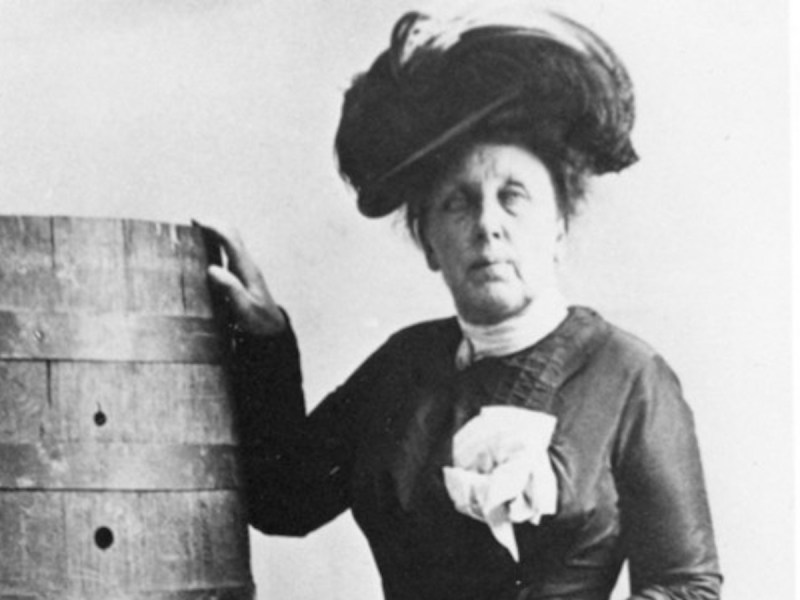For centuries, people have been attempting to survive a trip over Niagara Falls. The first woman to achieve this feat and survive was a woman named Annie Edson Taylor. However, despite making a name for herself in the stunt world, the rest of Taylor’s life was anything but happy.
Videos by Suggest
Annie Edson Taylor’s Decision To Go Over Niagara Falls
In 1829, a man named Sam Patch jumped from a high tower into the body of water the falls flows into. He survived the leap, which kickstarted a long tradition of people trying to go over Niagara Falls in increasingly strange ways.
By 1900, Taylor, a widowed American schoolteacher, had fallen on hard times. She decided the only way for her to make enough money to live on and restore her way of life was to go over Niagara Falls in a barrel. Taylor used a barrel made of oak and iron and then padded with cushions and a leather harness for protection to make the trip over the waterfall in.

Her trip was put off several times, as no one wanted to be considered an accessory in what could have very well ended as a suicide. Two days before Taylor’s planned trip, she and her team supposedly did a test-run with a cat to see if the barrel would break. According to the tale, the cat survived and signaled that Taylor was ready to take the plunge. However, Canadian historian Patrick Sirianni wrote a fascinating piece about Taylor’s trip that pointed out that none of the press at the time referred to a cat on any of the group’s multiple trips on the rivers.
She Survived The Trip With Just One Injury
On October 24, 1901—her 63rd birthday—Taylor traveled to the top of the falls to carry out the dangerous stunt. She climbed into her barrel with only her lucky heart-shaped pillow for safety. The lid was screwed shut and a friend used a bicycle pump to pressurize the barrel.
The barrel was set loose and Taylor went over Niagara Falls. The barrel was found around 20 minutes after she went over and, according to legend, Taylor was nearly unharmed except for a small gash on her forehead. More personal reports, as Sirianni found, indicate that Taylor suffered a more serious head wound and exhibited signs of what would now probably be considered a serious concussion in the days after the trip.
The Stunt Was Not A Money-Maker
Even though Taylor did the stunt to raise money for herself, she never found the wealth she had been chasing. Taylor earned some money doing public speaking engagements about her trip and wrote a memoir, but she reportedly spent most of her savings on private detectives after her manager stole her barrel and disappeared.
Taylor spent her final years taking pictures with tourists at a stand in Niagara Falls and working as a clairvoyant and performer of magnetic therapeutic treatments. She passed away in 1921, penniless and in terrible health, which she reportedly blamed on her traumatic Niagara experience. As she herself said to the press after emerging from the barrel back in 1901, “If it was with my dying breath, I would caution anyone against attempting the feat … I would sooner walk up to the mouth of a cannon, knowing it was going to blow me to pieces than make another trip over the fall.”
While Taylor will forever be remembered for being the first person to survive a trip over Niagara Falls in a barrel, her daredevil stunt was not the money-maker she thought it would be and possibly prematurely ended her life. Hopefully, her legacy can live on as a testament to her bravery and determination.
